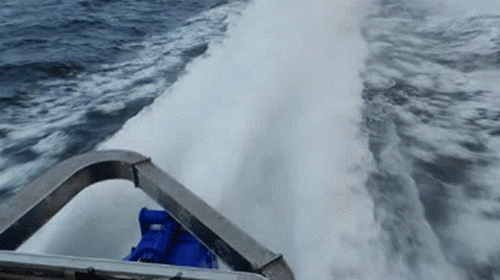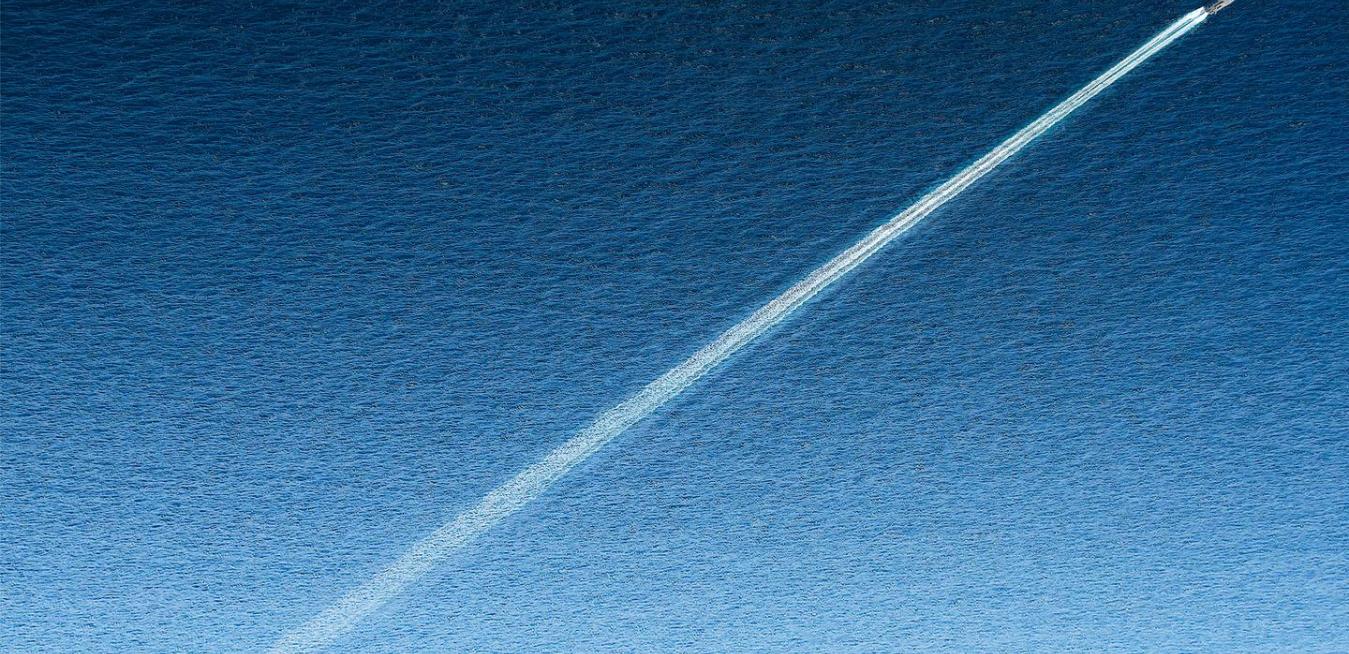The 99-metre catamaran recorded speeds of 107km an hour (58 knots) in recent sea tests using two modified GE gas turbine engines derived from larger Boeing 747 aircraft engines.
At full throttle, the Francisco’s inverted ocean image wake creates the impression of a boat that can fly.
It’s a remarkable feat for a vessel that can carry 1,000 passengers and 150 cars, and boasts a 1,100 square metre duty free shop.
The ferry is the product of collaboration between Incat, Revolution Design, and GE, and was delivered to Argentine ferry operator Buquebus.
Named after Pope Francis, the ferry travels 225 km along the River Plate estuary to link the pontiff’s native city of Buenos Aires and Montevideo, Uruguay.
The Francisco is powered by two aero derivative gas turbine engines from GE’s ecomagination portfolio.
The LM2500 dual fuel engines use diesel or liquefied natural gas, and tip the scales at 3,266kg each. The engine is capable of producing more than 22,000 kilowatts of thrust.
The ferry’s engines can run continuously for four hours at high speed, drawing on two 70,000 litre diesel tanks and two 40 cubic metre LNG tanks. That’s equal to the capacity of two average petrol tankers plus a 10 tonne truck.
Mark Dewey, Managing Director at Revolution Design, said his engineers worked with GE engineers to modify the design of the vessel's GE LM2500 gas turbine systems so they could operate efficiently on the two fuel types within the vessel.
The company worked closely with GE for almost two and a half years at Incat's Hobart shipyard.
Care was taken to meet strict international safety requirements governing the use of LNG in a marine environment.
"The result is a catamaran that can be operated on LNG, which is a much more cost effective and environmentally friendly fuel," he said. "This represents the future for passenger ferries."
The ship’s engines use diesel fuel to start, with heat from the exhaust used to change the LNG from liquid to gas form. Once underway, both turbines are switched to gas operation for the duration of the journey.
"The GE LM2500 is effectively the standard for marine turbines because of its reliability, but this is the first time a high-speed ferry has been run in a dual-fuel configuration," he said.






